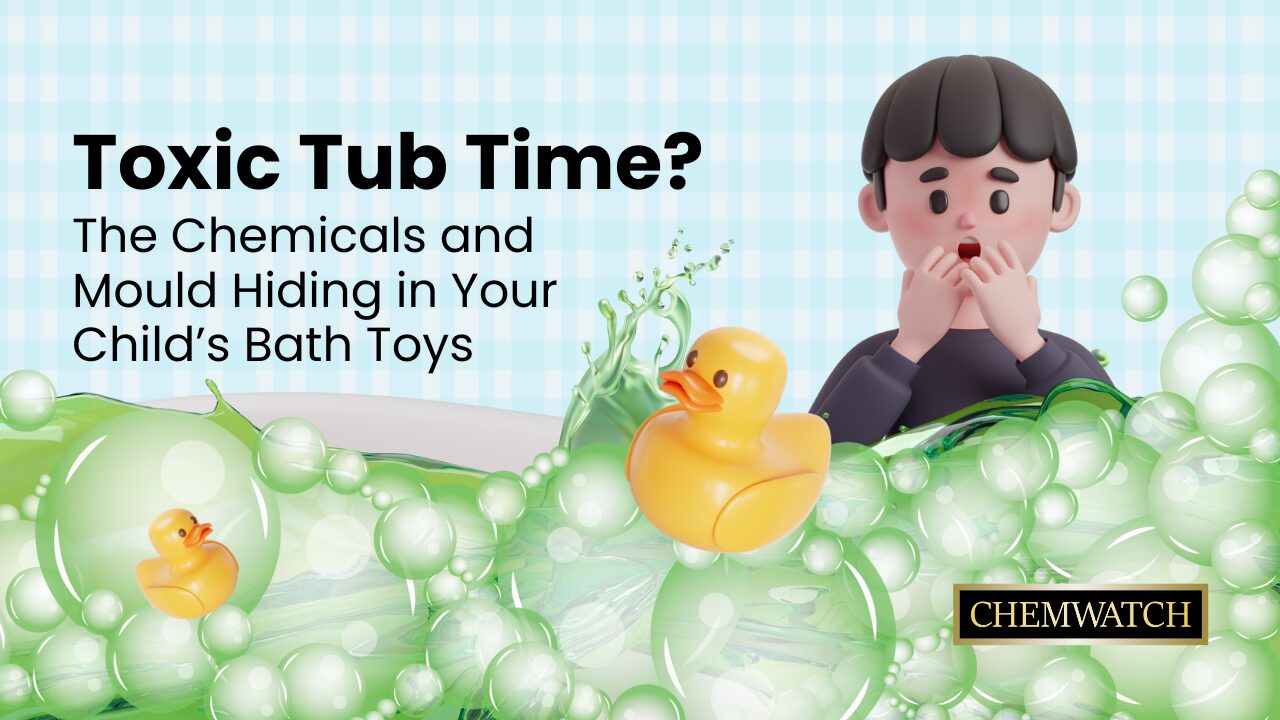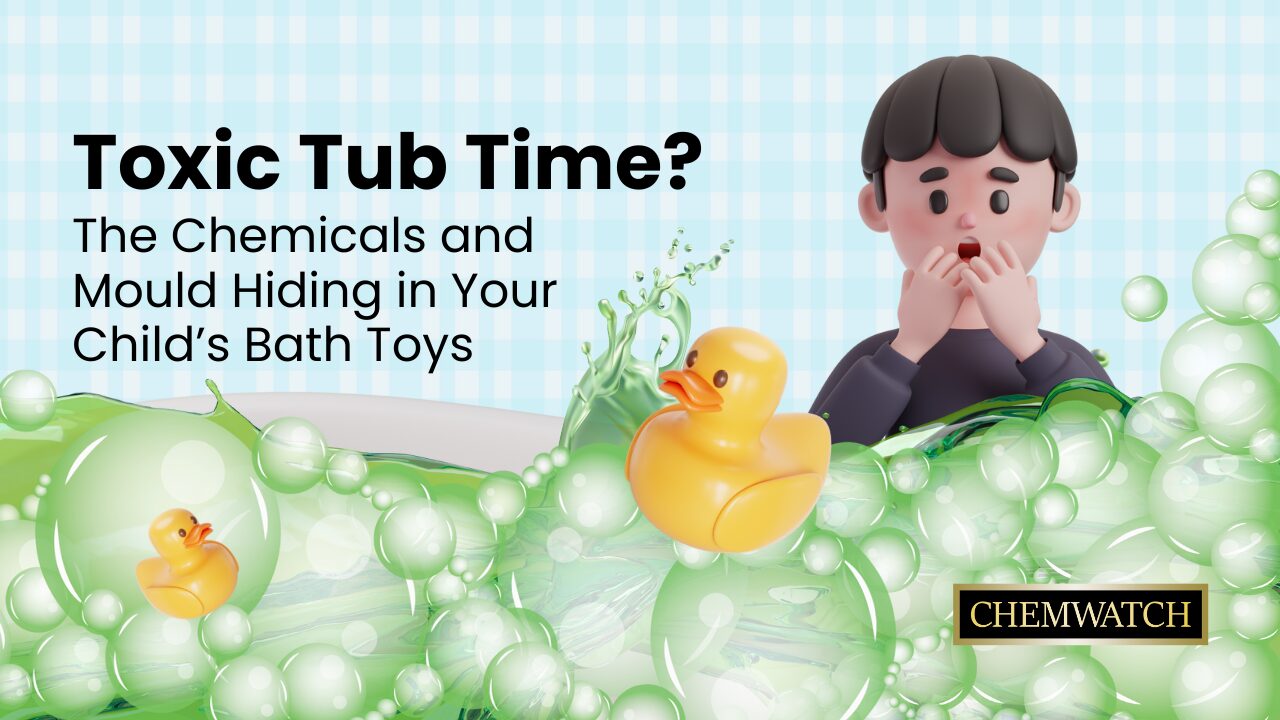
Bath time should be a calming, playful ritual for children- a chance to splash around and unwind before bed. But lurking beneath the bubbles, there may be unexpected dangers: toxic chemicals and mould hiding inside your child’s favourite bath toys. Because bath toys are repeatedly exposed to warm water, microbes, and wear and tear, they present unique risks for bath toy safety and overall child health.

Recent research and parent reports reveal concerning levels of chemical exposure, microbial contamination, and hidden toxins in everyday bath toys. From rubber ducks to squeaky boats, these colourful toys can harbour harmful substances and microorganisms that often go unnoticed.
Most bath toys are made from soft plastics like polyvinyl chloride (PVC), making them flexible and buoyant. However, these same features make them porous, absorbent, and prone to trapping moisture; especially in toys with holes, seams, or inflatable sections.
Each time a child squeezes one of these toys, warm water is pulled inside. Once bath time ends, that water becomes trapped, creating the perfect breeding ground for mould, bacteria, yeast, and slimy biofilms. This leads to bath toy contamination that is difficult to detect from the outside but can release spores, odours, and microbes back into the bath.
Scientific studies have found that the microbial communities inside these toys can include harmful bacteria such as Pseudomonas aeruginosa and Staphylococcus aureus, which can enter the body through cuts or mucous membranes. These organisms may pose infection risks, especially in young children or individuals with weakened immune systems.
Beyond mould, there are growing concerns about the chemicals in bath toys and how they leach into water during play. Many bath toys contain plasticisers, stabilisers, colourants, and other additives that degrade with heat, soap, and physical use. Common harmful chemicals found in bath toys include:
Although these substances may appear in small concentrations, repeated exposure can be harmful, especially for young children who are more susceptible to toxic effects due to their developing organs and faster metabolism.
While it’s difficult to prevent water from entering toys entirely, simple steps can help improve bath toy mould prevention and overall bath toy safety:
Safer, hole-free toys dramatically reduce the risk of mould and chemical leaching.
Many parents are unaware that toy materials like any other manufactured chemical product should be supported by Safety Data Sheets (SDS). These documents detail a material’s hazards, chemical composition, safe handling practices, and disposal instructions.
Manufacturers are required to ensure that toy materials meet strict toy safety regulations for chemicals such as BPA, phthalates, and heavy metals. Reviewing SDS documentation during manufacturing helps ensure full compliance with chemical safety requirements and protects children from unnecessary exposure.
Chemwatch specialises in chemical safety, compliance, and data management, supporting organisations in identifying and mitigating chemical risks across their supply chain. With one of the world’s largest SDS databases, Chemwatch provides access to detailed information on the ingredients and hazards of materials used in consumer products—including plastics, additives, and other components found in children’s toys.
By helping manufacturers meet chemical safety compliance standards, Chemwatch ensures safer, more transparent production processes for everyday items like bath toys.
Sources